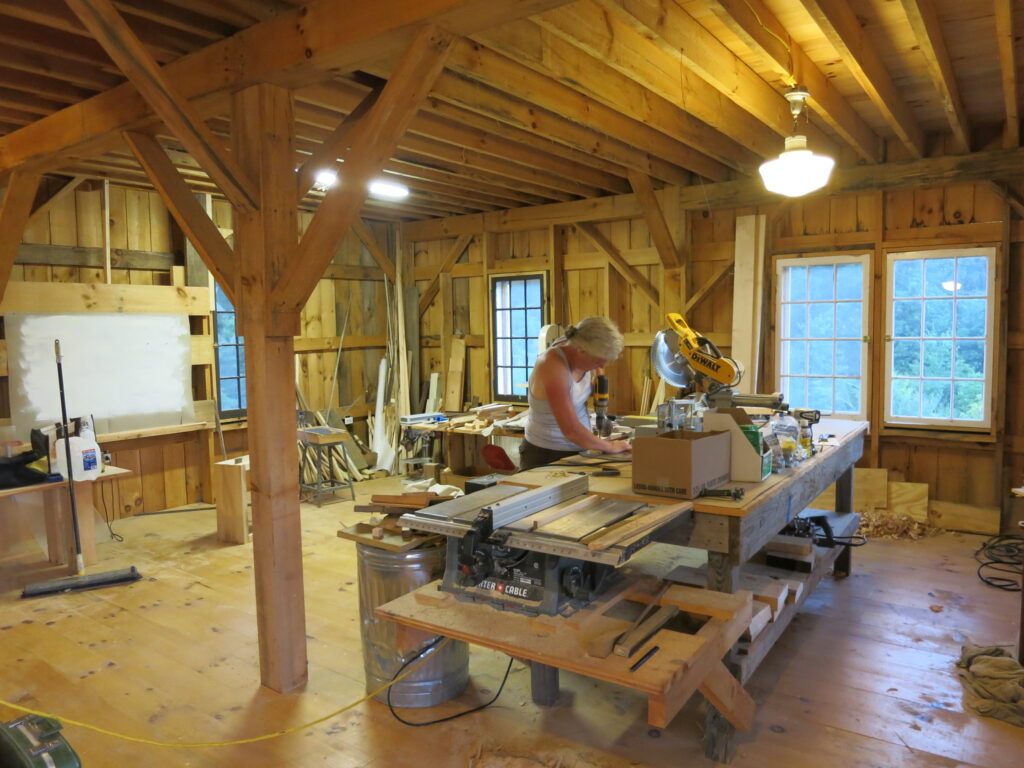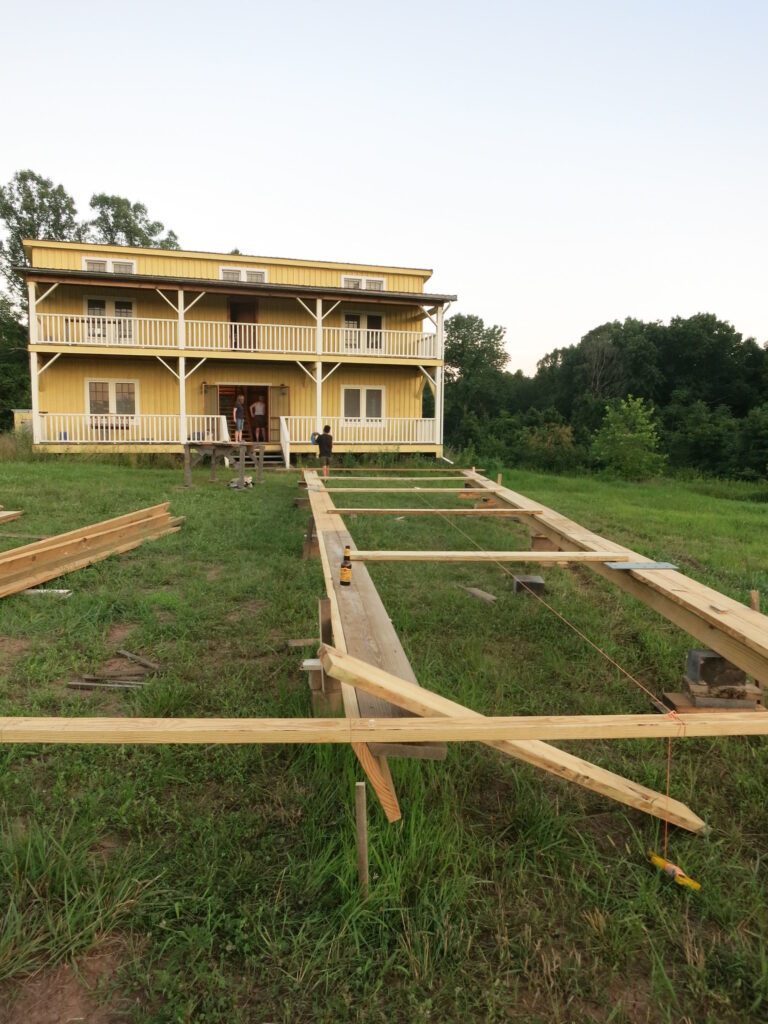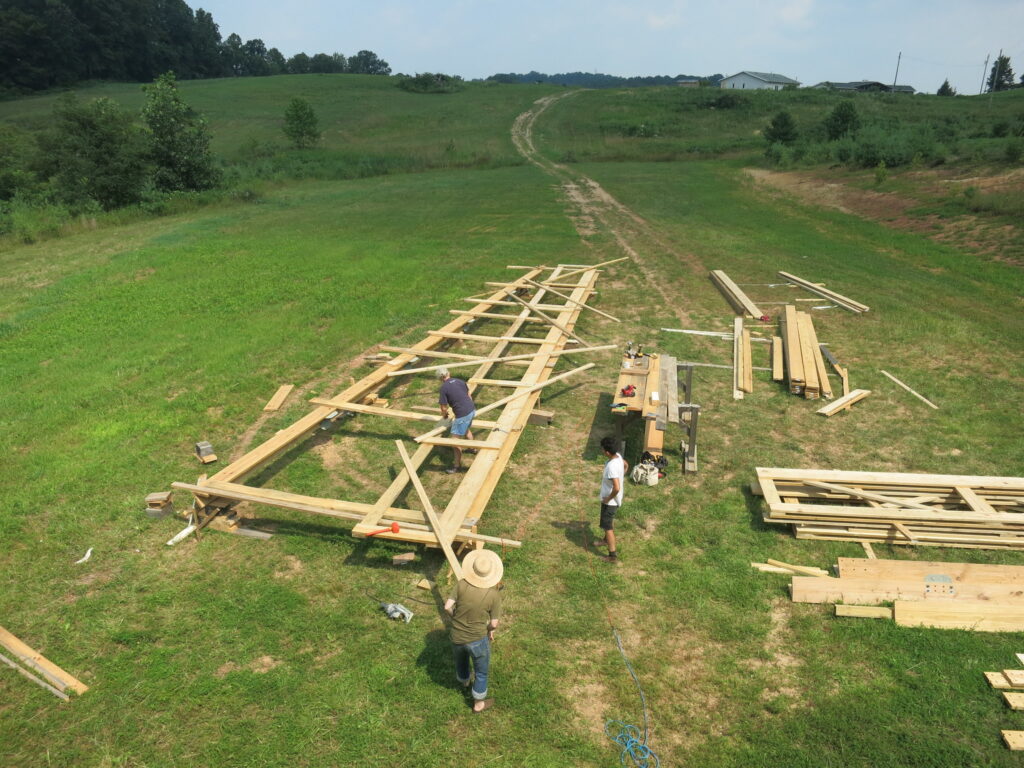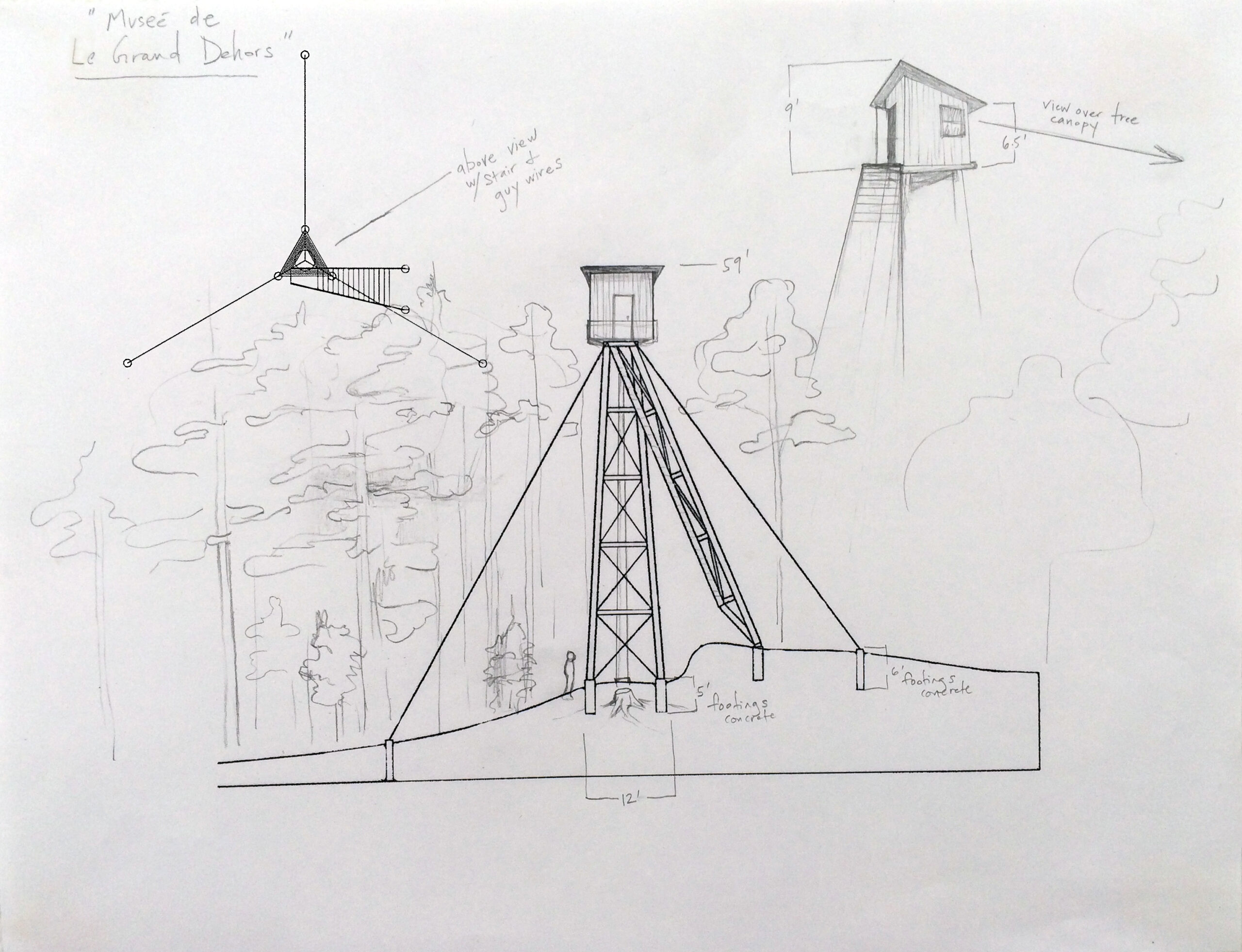Le Museé du Grand Dehors (The Museum of the Great Outdoors), 2013- ongoing
Sara Black, Amber Ginsburg and Charlie Vinz
Le Museé du Grand Dehors (The Museum of the Great Outdoors) is a sculptural work that uses a tree as the conceptual lens through which we critically examine and expand our experience of western, human-centered notions of ‘nature’ and environment. The title is drawn from the philosopher Quentin Meillassoux of the speculative realism movement, who refers to le grand dehors as that which reaches outside of possible human perception or knowledge. Many continental philosophers, particularly in the lineage of Kant, argue that human knowledge systems are the center of what is knowable and even “real,” because humans are the only beings capable of dimensional perception/consciousness. It is our interest to generate a work that glimpses the edges of our knowledge by expanding a single form into deep time.
Le Museé du Grand Dehors is a museum that overlooks a tree canopy and its surrounds. The tower and museum sit directly above a harvested tree’s stump. To enter, you climb a ship’s ladder attached to a 50-foot tower. At the highest point, you enter a triangular room whose ceiling slopes downward toward two windows. This room houses a single diamond (laboratory-created and chemically identical to a mined diamond) made from the remains of the harvested tree. The stone, the table and the room are all crafted from the material of this tree. These varying modes of ‘production’ reference distinct and increasingly magnified timeframes, from the human to the geologic.
We are performing craft to highlight the well-hewn relationship between material and human endeavoring. Looking beyond the horizon line, we reference broader resource use by implicating diamond mining and manufacture along with forestry. By transmuting the humble material of the American tree into the coveted and rare diamond, human value reveals its precarity and biological time is stretched into geologic time.



